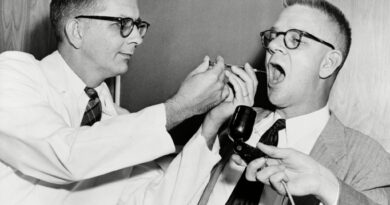The secret psychic experimentation that inspired Stranger Things
The new season of Stranger Things begins with a flashback sequence set deep in a secret laboratory in the fictional town of Hawkins, Indiana. Children with shaved heads move objects with their minds, project their consciousness to far-off places and eventually, once Eleven gets involved, use their powers for far more sinister reasons. It sounds as far-fetched as you’d expect from a show about extradimensional monsters, but remarkably scenes such as these are inspired by a true story.
Creators the Duffer Brothers originally based Stranger Things around a real-life human experimental programmes such as Project MKUltra and Project Star Gate. Conducted by the CIA in the 1950s, MKUltra’s purpose was to explore the potential of mind-control techniques that could give America an edge in the Cold War. Star Gate, in 1978, centred around the potential development of psychic abilities.
The programmes involved experimenting with LSD – which, in the case of MKUltra, was used on American citizens without their knowledge – alongside researching outlandish concepts such as telepathy, remote viewing (where someone could spy on another location, using their mind) and, of course, psychokinesis.
Most of Project MKUltra’s records were destroyed after it was shut down in 1977, while declassified information about Project Star Gate is vague and the research itself deemed to have dubious value. Physicist Patrick Johnson, an associate teaching professor at Georgetown University, is doubtful that either programme managed to develop a way to move objects with your mind.
“I know of no real physical way to make psychokinesis happen in the ways we see it in Stranger Things,” he says. “When we move an object with our hands, the fundamental physics of it all is that the electrons surrounding the atoms in our hands exert a force on the electrons surrounding the atoms in whatever object we are moving around. In order to move our hands to move the object, our brain sends an electrical signal through our muscles which tell our muscles to move.
“In principle,” he continues, “we could embed a device which reads the electrical signals that our brain sends to our hand. That device could then interpret and boost the signal to create a targeted electromagnetic field, which could ionise and manipulate the object in the same way as our brains directing our hands.
“There are so many challenges to make this happen, plus it requires mechanical enhancements, but this is the best mechanism I could come up with to approximate psychokinesis as we have seen.”
The idea of humans developing psychokinetic powers – or rather, people claiming that they have developed or witnessed psychokinetic powers – is an area of interest to Richard Wiseman, Professor of the Public Understanding of Psychology at the University of Hertfordshire. He explains that alleged psychokinetic powers tend to come in three forms: micro, macro and biological.
“Micro phenomena,” he says, “is trying to influence things like a random number generator on a computer or the roll of a dice, where you have to try to roll a target number. These kinds of studies are enormously problematic and none of their effects have survived the ultimate replication test.” In fact, as Wiseman explains, flawed parapsychology studies have been useful for mainstream psychology and other fields of science.

“It has helped uncover problems like doing lots of statistical tests and not reporting them all,” he says, “or reporting aspects of your data instead of all of it.” The biggest change, he says, is the introduction of pre-registration, which is the documentation of elements such as a planned hypothesis before starting research.
“These things should be specified in advance and often are not in science. And when you do pre-specify them, suddenly the [parapsychological] effects go away. It’s becoming a big thing in science and flows from parapsychology, where studies were critiqued for all of these things and then people went, ‘hold on a minute, that’s true of our stuff as well!’”
Macro, meanwhile, is “the big stuff, which is moving tables, bending spoons and so on,” says Wiseman. “And that stuff is heavily associated with sleight of hand and trickery.”
The third strand, meanwhile, centres around the idea of people influencing biological systems rather than physical ones. “This is where you try to influence another person,” Wiseman explains. “And some of that stuff is positive, you’re trying to make them feel better. And some of it is where you’re trying to do nasty things to them.”
Wiseman gives the example of the phenomenon where you feel like you’re being stared at, before then turning around to find someone looking at you. Does that mean that you can impact someone’s biological reaction just through staring at them, or that we possess some sort of sense for things we can’t see?
“We’ve done studies where you monitor people’s physiology and they’re stared at at randomly determined times. The question is, does that influence their physiology? We did three of them. The first one was significant. The second one, we messed up on the methodology and the third one, the biggest one, was nonsignificant.”
That might sound vaguely promising, but Wiseman is keen to stress that, “personally, I think the evidence for any of them is fairly weak.” Unless, of course, all the evidence is hidden in a shady laboratory buried deep beneath a sleepy American town.
About our expert, Patrick Johnson
Patrick Johnson is an assistant teaching professor at Georgetown University. He previously taught at Marquette University and William Jewell College after receiving his PhD in physics from Washington University in St Louis.
Read more from Popcorn Science:


